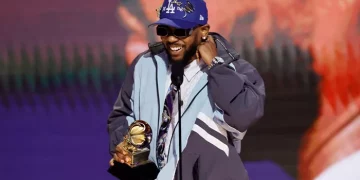Rap music, one of the most influential genres of the 20th and 21st centuries, has a distinctive sound that is shaped by its diverse use of instruments. While traditionally associated with vocals and beats, rap incorporates a wide range of musical tools, both electronic and acoustic. This article explores the key instruments used in rap music, detailing their role and impact on the genre.
Drum Machines – The Heartbeat of Rap Music
Drum machines are integral to the production of rap music. These electronic devices create beats and rhythms, providing the foundation for most rap tracks.
Popular Models
The Roland TR-808 is a legendary drum machine that has defined the sound of many classic rap songs. Its deep bass drum and snappy snares are iconic.
The Akai MPC series is another favorite among producers, allowing for detailed beat creation and sampling.
Why They Matter
Drum machines allow producers to create unique and customizable rhythms, essential for setting the mood of a rap song. From slow, heavy beats in gangsta rap to fast-paced rhythms in battle rap, the versatility of drum machines is unmatched.
Synthesizers – Adding Melody And Atmosphere
Synthesizers play a crucial role in rap music by adding melodic and atmospheric elements. These electronic instruments generate a wide range of sounds, from sharp leads to ambient pads.
How Synthesizers Are Used
Basslines: Deep, resonant basslines created by synthesizers are a hallmark of rap music. They add weight and intensity to the tracks.
Melodic Hooks: Many rap songs feature catchy synthesizer melodies that make them memorable.
Notable Examples
Producers like Dr. Dre and Kanye West are known for their innovative use of synthesizers, crafting iconic melodies that define their beats.
Samplers – Crafting Unique Sounds
Sampling is at the core of rap music production, and samplers are the tools that make it possible. These devices allow producers to take snippets of existing recordings and incorporate them into new tracks.
Classic Sampling Techniques
Looping: Repeating a section of music to create a rhythm or melody.
Chopping: Breaking a sample into smaller pieces and rearranging them creatively.
Famous Samples in Rap
Many classic rap songs, such as The Notorious B.I.G.’s “Juicy,” rely on samples from earlier tracks to build their foundation.
Turntables – The Origin of Rap Music
Turntables have a historic connection to rap, dating back to its origins in the Bronx. DJs used turntables to create beats and rhythms by manipulating vinyl records.
Scratching
A technique where DJs move the vinyl back and forth to produce rhythmic sounds. Scratching remains a signature element in many rap tracks.
Mixing and Beatmatching
DJs use turntables to mix tracks seamlessly, creating a continuous flow of music that forms the backbone of rap performances.
Keyboards And Pianos – Versatile Tools for Rap
Keyboards and pianos are frequently used in rap music for composing melodies, harmonies, and even basslines.
Electronic Keyboards
Compact and versatile, electronic keyboards can emulate a wide range of instruments, making them a staple in studios.
Acoustic Pianos
While less common, acoustic pianos appear in rap ballads or introspective tracks, adding a raw and emotional touch.
Guitars – Adding Texture And Groove
Although not as common as other instruments, guitars are sometimes used in rap music to add texture and groove.
Electric Guitars
Used for creating riffs and adding energy to tracks, electric guitars appear in subgenres like rap rock.
Bass Guitars
Bass guitars provide deep, groovy basslines that complement the rhythm and give the music a fuller sound.
Percussion Instruments – Beyond The Drum Machine
While drum machines dominate, traditional percussion instruments also have a place in rap music.
Examples of Percussion Instruments
Congas and bongos for adding a Latin flair.
Tambourines and shakers for subtle rhythm enhancements.
Live Performances
Percussion instruments are often used in live performances to create dynamic and energetic shows.
String Instruments – Adding Orchestral Depth
String instruments, such as violins, cellos, and violas, are used to add an orchestral depth to rap music.
Sampled Strings
Many producers sample string sections from classical or film scores to create dramatic beats.
Live Recordings
Some tracks feature live string recordings for an authentic and rich sound.
Brass And Woodwinds – Bringing The Funk
Brass and woodwind instruments, like trumpets, saxophones, and flutes, are occasionally used in rap music to bring a funky or jazzy vibe.
Classic Examples
Tracks like Jay-Z’s “Show Me What You Got” incorporate live brass sections for a vibrant sound.
Jazz Influence
The influence of jazz on rap music has led to the use of woodwind instruments in subgenres like jazz rap.
Digital Audio Workstations (DAWs) – The Modern Instrument
While not an instrument in the traditional sense, DAWs like FL Studio, Logic Pro, and Ableton Live are essential for producing rap music.
What DAWs Do
Allow for layering of multiple instruments.
Facilitate editing and mixing of tracks.
Provide a platform for creating beats, melodies, and effects.
Revolutionizing Production
DAWs have made music production accessible to anyone with a computer, revolutionizing how rap music is created.
Conclusion
Rap music is a genre that thrives on creativity and innovation, reflected in its diverse use of instruments. From traditional tools like turntables and guitars to modern synthesizers and DAWs, each instrument contributes to the unique sound of rap. Understanding these instruments not only deepens appreciation for the genre but also highlights the skill and ingenuity of its creators.
Related topics:



























